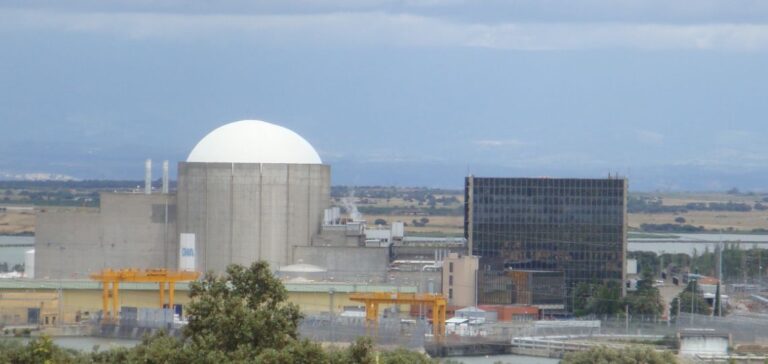Spain is continuing its energy transition with a clear objective: to gradually shut down all its nuclear power plants by 2035. This plan, outlined in the National Energy and Climate Plan (PNIEC), aims to replace nuclear-generated electricity with renewable sources such as solar and wind. Currently, the country operates five nuclear plants with a total of seven reactors, which account for approximately 20% of national electricity production.
A contested shutdown schedule
The first site affected is the Almaraz plant, located in Extremadura, where both reactors are scheduled to shut down between 2027 and 2028. This facility contributes 7% to national electricity production and supplies 15% of Madrid’s electricity. Its closure has raised serious concerns among local officials and trade unions, who warn of economic consequences. Around 4,000 direct and indirect jobs are at stake, along with an estimated loss of millions of euros for the regional economy.
In response to these concerns, the president of the Extremadura region has criticised the potential impact on local activity and has called for a revision of the shutdown schedule. Many local officials and workers have mobilised, organising protests and actions to highlight the risks associated with this transition.
Political and industrial pressures
The People’s Party, the main opposition party, is calling for a reassessment of the national energy strategy and urging the government to follow the decisions of several European countries that are extending the lifespan of their nuclear power plants. The industrial sector, represented by companies operating nuclear plants, is also concerned about the gradual elimination of a stable energy source deemed essential to the country’s economic competitiveness.
Spain’s energy sector is divided on the issue. While some nuclear industry companies advocate for extending the operation of existing reactors, other major players in the electricity market remain more cautious and insist on adhering to the planned shutdown dates.
An energy transition under scrutiny
The government asserts that the closure plan was developed in consultation with the relevant companies and that Spain’s electricity system is prepared to handle these changes. Investments in renewable energy continue to grow to ensure sufficient capacity to meet future demand.
However, experts emphasise that the success of this transition will depend on the rapid development of electricity storage and transmission infrastructure. A modernisation of the grid and increased investments in alternative energy sources are seen as essential to avoiding supply constraints and containing a potential rise in electricity prices.






















